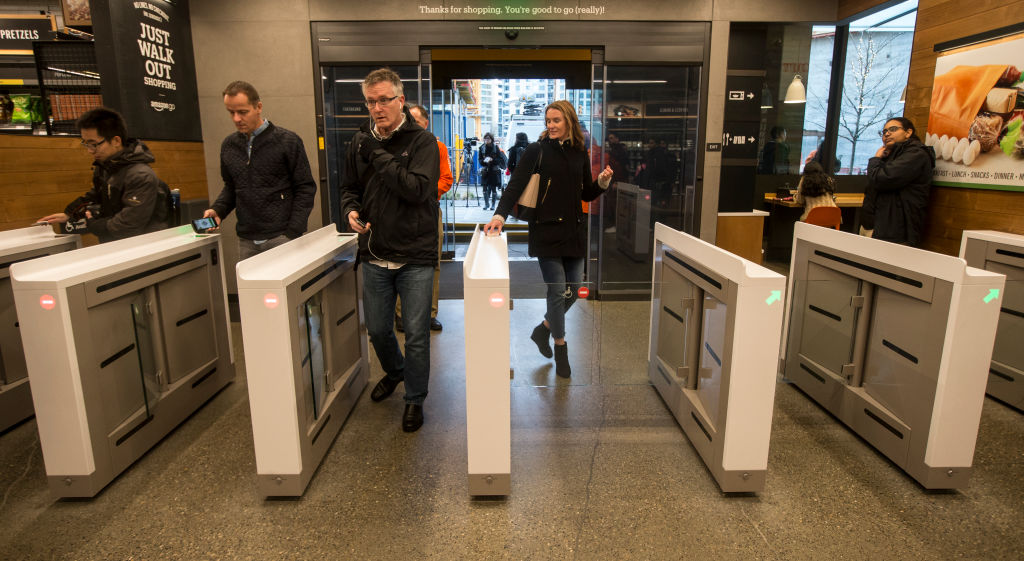Today’s challenging retail environment poses a host of problems for retailers. The loss of inventory – especially due to retail theft – happens to be a fairly huge one.
With online selling becoming the order of the day, it is that much harder for retailers to physically track their inventory all the time. Why? Because more often than not, retailers selling online are geographically located in different places from their warehouses.
Every year, retailers small and big lose huge parts of their inventory to retail stock theft, $60 billion to be precise, to shrinkage. Retail theft can happen at any point from the time the consignment arrives at your warehouse. It may be whisked away from the consignment itself, written off as damage even though it is in perfect working condition, or pilfered one product at a time over many days.
Stock theft is often a direct consequence of poor inventory management practices. Fixing this problem can help you prevent theft to a good extent.
Here’s everything you need to know about stock theft in the present context, and what you can do to prevent retail theft.
Sources Of Retail Stock Theft
The first step in tackling retail stock theft is to identify the source. So, we bring you the five primary sources that lead to the loss of retail stock because of theft.
1. Shoplifting by customers


(Image Source)
According to the National Retail Security Survey of 2018, shoplifting by customers is the top source of retail stock loss, surpassing even employee stock theft. It contributes to over 35% of stock loss and can cost you billions of dollars. Customers usually tend to shoplift items either for their own use or for resale by hiding items, meddling with price tags, or transferring items from one container to another.
2. Employee theft
Several stores often report that stock theft by employees is their top concern, and this is with a good
reason. Retailers have been found to lose close to 30–35 % of their stock because of employee theft in extreme cases. Employees are likely to indulge in or encourage retail stock theft for their personal use, reselling products to make extra cash or a lack of work satisfaction.
3. Administrative and paperwork errors


Errors – however tiny – while marking up or marking down prices could cost you a lot of money. So,
although such errors are usually honest mistakes, it is very important that you are extremely cautious while counting your stock and pricing items all the time. It could well be the case that a newly stocked product is sold for a discount by mistake, causing losses not of the stock itself but of money.
4. Unknown loss
This is the most frustrating cause of retail stock loss. Why? Because you end up having no idea about where your retail stock has gone and who is responsible for its loss. It is the kind of mystery that is truly no fun to solve. However, unknown losses are quite common, and you can reduce them to a good extent by practicing better inventory management.
5. Vendor fraud or error
Although this is the least common cause of retail stock theft, it is still important to be aware of vendor
fraud or error. It most likely occurs when an outside vendor comes to your store to stock inventory. Vendors can cause you stock losses by either providing fewer inventory units than you invoiced or by
stealing other products.
Now that you know how retail stock can get stolen, you can work towards identifying when it happens.
Identifying Retail Stock Theft
Most retailers often find out about stock theft when they count their inventory. So, the best way to minimize retail stock theft is to count your inventory frequently. This way, you can identify discrepancies in your book and actual inventory values as quickly as possible.
1. Counting Your Inventory


Frequent counting of inventory, especially in a large warehouse, can mean the loss of business during that particular time period. A stock should not move in or out during a full inventory count. If you have never done this before, it is worth shutting operations for a day or two to count your inventory in full.
On a more frequent basis, you can count portions of the warehouse, one at a time. You can also count products that move often more often, and those that do not move as much less often. Read more about inventory counting in this comprehensive guide.
2. Adopting an inventory management software
While stock reconciliation is a great way to keep your inventory accurate, complementing it with an inventory management software like Primaseller ensures accuracy for a long time to come. This would mean counting all your inventory just once before you start using the software.
Then, after you input your initial stock values, there is zero scope for human error, thus keeping your inventory levels as accurate as possible. Frequent counting in batches can help consolidate the book and actual values and identify theft, if any, in its initial stages.


How To Prevent Retail Theft?
Frequently counting your inventory is, without a doubt, an important step in tackling retail stock theft. However, there are other steps you can take to effectively discourage and decrease stock theft.
1. Train your staff


(Source)
Educating your staff about how to prevent shoplifting and the measures you intend to take to
prevent employee theft can go a long way in reducing retail theft. Moreover, a proactive training program that shows employees that you care about them builds trust and discourages them from stealing.
Advise your employees to:
- Be extra cautious during the opening, peak, and closing hours.
- Pay extra attention to customers who have bulky handbags and strollers.
- Keep an eye out for customers who spend a lot of time watching the staff. If they notice something off, they can simply go up to the customer and offer to help him/ her. This can help deter them from shoplifting.
You can also prevent employee theft by letting your employees know that you are:
- Tracking inventory at every step of the way. The key, of course, is to make it sound like a decision that benefits everyone, and not just a measure to prevent people from stealing.
- Implementing high-security measures at your store/ warehouse.
2. Install security signs/ mirrors
A cost-effective way to prevent customers from shoplifting is to use signs at appropriate points in your store. If you’re wondering what these points are, just ask yourself where in the store you would go if you were a shoplifter and you will lead yourself there.
Putting up signs that explicitly mention legal implications for shoplifters can also help you in case of
any legal trouble.
You could even install security mirrors in the secluded parts of your store. This will give you visibility
of any shady activity in such store areas. The great part about mirrors is that they are also inexpensive to install. Putting up interesting signs such as, “Smile! You’re on camera!” can warn people without being condescending.
3. Set up security cameras/ software


(Source)
This might sound bizarre, but you could install fake security cameras in your store to prevent stock theft if your budget is small. These cameras will give your employees and customers the impression that they are being watched, so they will be unlikely to steal.
However, if you can invest sufficiently in-store security, you should install surveillance cameras in your store. This will allow you to monitor store activity at all times and view video recordings to check for retail theft when you need to.
There is also the option of using video analytics software, which is a significantly more expensive option. This is a sophisticated surveillance system that monitors people in your store in real-time and alerts you if it senses suspicious behavior.
Also, depending on the existing security system in your store, you may even be able to integrate your surveillance cameras with other loss prevention programs.
4. Use RFID tags
Radio frequency identification tags, or RFID tags, are stickers or pin-tags that can be attached to
products. Affixing such a tag to an item immediately after manufacturing allows you to track the position of the item at every stage of the supply chain.
This proves incredibly useful in preventing stock loss during distribution. Not just that, RFID tags are also handy when it comes to identifying retail stock theft and misplacement. For instance, if a customer leaves your store with an item that still has an RFID tag on it, a sensor alarm will go off near the door and alert your staff.
5. Employ a security agency
Seek out a well-established security company to help you with a security guard for your store. A good security company will have done the necessary background checks before having people on board. So, depending on your need, you could choose to hire either an on-demand or a full-time security guard.
6. Set up user permissions
POS systems today come with options for user permissions that help you control access to confidential data and tasks. So, setting up user permissions is a great way to prevent employees from gaining access to functions that can result in stock theft. It is always a good idea to set user permissions for every individual separately rather than based on designations. Also, be very careful about whom you grant permission to void sales – granting permissions to the wrong people for this task makes stealing stock very easy.
As an extension to this, keep an eye on stores where the number of void sales seems unusually high.
7. Manage your inventory right
Ensuring that you have the right kind of control over your inventory is vital if you intend to prevent
stock items from going missing and avoid unchecked discrepancies. A powerful end-to-end inventory management software can help you with this by keeping track of your retail stock in real time and allowing you to fix any discrepancies at the earliest.
Primaseller provides you with timely reports of your stock levels, allowing you to compare them all and
figure out patterns and root causes of discrepancies if any. Also, with an inventory management system, your levels of inventory transparency go up significantly, thus deterring anyone who might be considering pilferage, especially when the stakeholder is internal.
What steps have you taken to prevent inventory theft and losses so far? Which of these methods worked best for you? Tell us in the comments below.
Request Demo
thank you
thank you
thank you
Request Demo
window.IS_INDIA = 0;window.USER_COUNTRY = 'China';window.USER_CITY = 'Hangzhou';window.USER_COUNTRY_ISO = 'CN';
Armed with a degree and a pen, loves to tell stories. When not telling stories, she also works. Hard to decide which one she likes more.
(function(d){var s=d.createElement('script');s.type='text/javascript';s.src='https://a.omappapi.com/app/js/api.min.js';s.async=true;s.dataset.campaign='cxecxy09nlvnnyvfiqjf';s.dataset.user='22867';d.getElementsByTagName('head')[0].appendChild(s);})(document);
,



